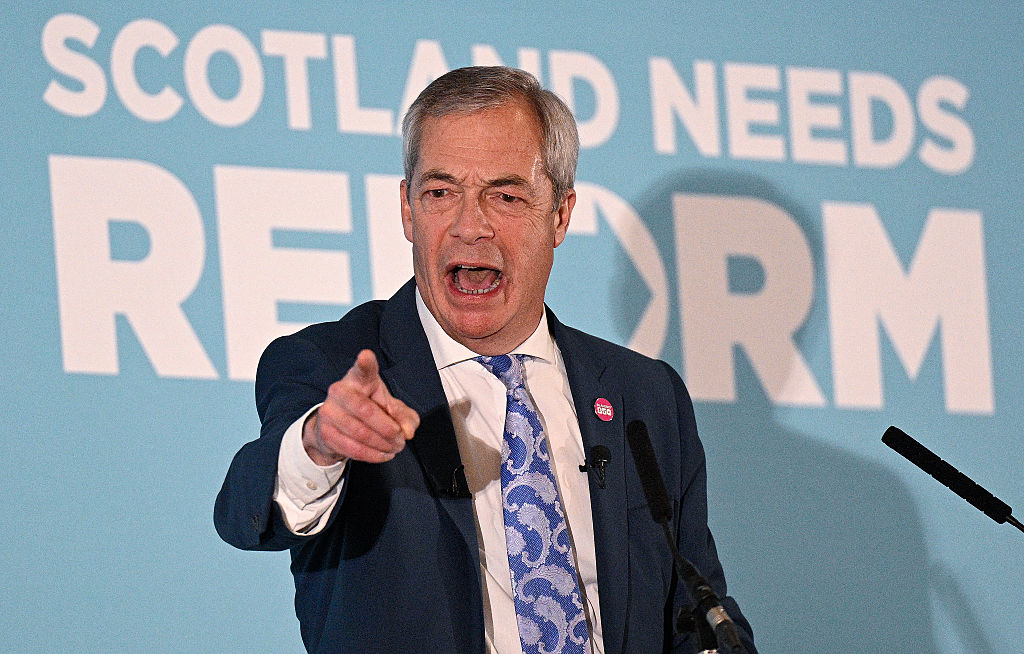The Federal Reserve will deliver a volatile summer for markets
America's central bank has hinted that it expects to raise interest rates twice in 2023, sending send markets into a spin. There's more volatility to come.

Has Jerome Powell turned into a hawk? The chair of the US Federal Reserve, America’s central bank, has repeatedly insisted that surging inflation is “transitory” and that monetary policy must be kept ultra-loose for the foreseeable future. The annual rate of US inflation hit a 13-year high of 5% last month, while other data also shows that the US economy is red-hot. Hence a rethink: last week Powell finally acknowledged that “inflation could turn out to be higher and more persistent than we expect”.
The end of the reflation trade
Fed policymakers have signalled that they expect to raise interest rates twice in 2023, earlier than previously suggested. While that seems far off, the mere hint that the Fed is taking inflation more seriously was enough to send markets into a spin.
America’s S&P 500 stock index had its worst week since February last week, tumbling by 1.9%. The last seven months in markets have been defined by the “reflation trade”, says The Economist. Vaccine-enabled reopening has brought greater interest in beaten-down consumer, financial and commodity stocks. The optimism was underpinned by “super-loose monetary policy”: US interest rates are close to zero and the Fed is making $120bn in monthly asset purchases, financed with quantitative easing (QE) – printed money.
MoneyWeek
Subscribe to MoneyWeek today and get your first six magazine issues absolutely FREE

Sign up to Money Morning
Don't miss the latest investment and personal finances news, market analysis, plus money-saving tips with our free twice-daily newsletter
Don't miss the latest investment and personal finances news, market analysis, plus money-saving tips with our free twice-daily newsletter
The suggestion that it “may eventually think about” hiking interest rates feels like a turning point to some. Stocks rallied again at the start of this week, suggesting the reaction was a bit overdone. The US economy has still not fully reopened; the “great reflation trade” could still have “further to run”.
Pick your poison: debt or inflation
Central bank promises of future interest rate rises have a credibility problem. Policy makers “face a brutal choice”, says Jeremy Warner in The Daily Telegraph, Central bankers need to raise interest rates to control inflation, but doing so risks provoking a “fiscal and economic crisis”. Governments and firms loaded up on debt to get through the pandemic. Hiking their ultra-low borrowing costs could spell ruination. Policymakers will instead be forced to “let inflation rip”. This quandary is a reminder that the “response to any crisis ends up sowing the seeds for the next one”. Signs of future trouble are already brewing, says Irwin Stelzer in The Sunday Times. The US housing market is booming, with a pace of price increases unseen since before the 2007 subprime meltdown. Powell admits as much, so why on earth is the Fed still buying $40bn a month in mortgage-backed securities, a measure designed to prop up the market in the depths of the crisis? Economist Larry Summers thinks “future financial historians will be mystified”.
Traditionally, financial markets “entered the doldrums” over summer as people went on holiday, says Randall Forsyth in Barron’s. But this year the Fed faces the delicate task of unwinding its “supereasy monetary policies”. Attempts to “taper” monetary support have brought market turmoil in the past. Investors should “prepare for a volatile summer”.
Get the latest financial news, insights and expert analysis from our award-winning MoneyWeek team, to help you understand what really matters when it comes to your finances.
Alex is an investment writer who has been contributing to MoneyWeek since 2015. He has been the magazine’s markets editor since 2019.
Alex has a passion for demystifying the often arcane world of finance for a general readership. While financial media tends to focus compulsively on the latest trend, the best opportunities can lie forgotten elsewhere.
He is especially interested in European equities – where his fluent French helps him to cover the continent’s largest bourse – and emerging markets, where his experience living in Beijing, and conversational Chinese, prove useful.
Hailing from Leeds, he studied Philosophy, Politics and Economics at the University of Oxford. He also holds a Master of Public Health from the University of Manchester.
-
 The war dividend – how to invest in defence stocks as the world arms up
The war dividend – how to invest in defence stocks as the world arms upWestern governments are back on a war footing. Investors should be prepared, too, says Jamie Ward
-
 Literacy Capital: A trust where great returns fund a good cause
Literacy Capital: A trust where great returns fund a good causeThere’s plenty to like about specialist private-equity trust Literacy Capital, says Max King
-
 An AI bust could hit private credit – could it cause a financial crisis?
An AI bust could hit private credit – could it cause a financial crisis?Opinion Private credit is playing a key role in funding data centres. It may be the first to take the hit if the AI boom ends, says Cris Sholto Heaton
-
 8 of the best ski chalets for sale now
8 of the best ski chalets for sale nowThe best ski chalets on the market – from a traditional Alpine-style chalet in Switzerland to an award-winning Modernist building in Japan’s exclusive ski areas
-
 Did COP30 achieve anything to tackle climate change?
Did COP30 achieve anything to tackle climate change?The COP30 summit was a failure. But the world is going green regardless, says Simon Wilson
-
 Who is Christopher Harborne, crypto billionaire and Reform UK’s new mega-donor?
Who is Christopher Harborne, crypto billionaire and Reform UK’s new mega-donor?Christopher Harborne came into the spotlight when it emerged he had given £9 million to Nigel Farage's Reform UK. How did he make his millions?
-
 The best Christmas gifts for your loved ones
The best Christmas gifts for your loved onesWe round up the best Christmas gifts with a touch of luxury to delight, surprise and amaze family and friends this festive season
-
 Leading European companies offer long-term growth prospects
Leading European companies offer long-term growth prospectsOpinion Alexander Darwall, lead portfolio manager, European Opportunities Trust, picks three European companies where he'd put his money